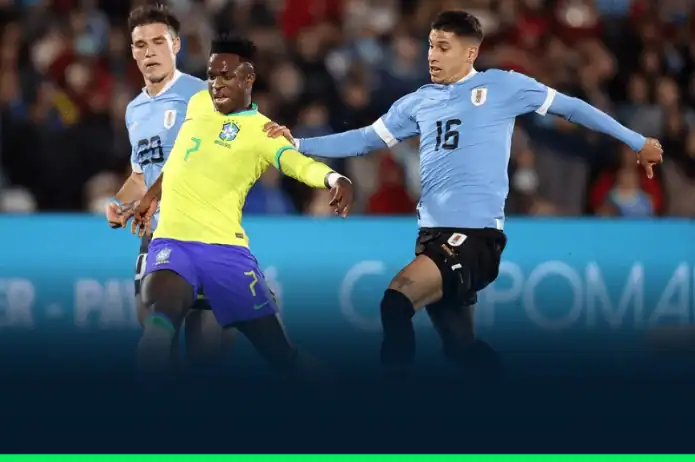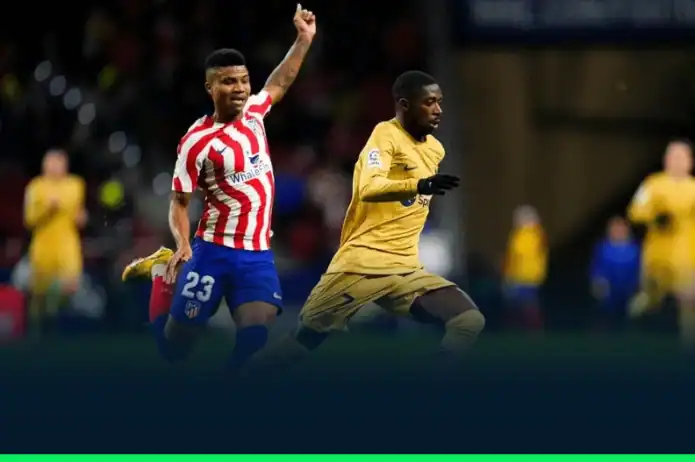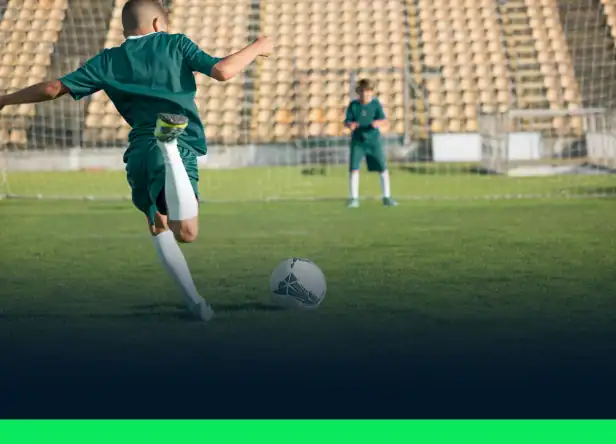Understanding phases of play in soccer is fundamental for any coach or analyst seeking to elevate their team’s tactical sophistication and strategic execution. Soccer demands a comprehensive grasp of these tactical sequences to achieve consistent performance at the highest levels.
The Tactical Foundation of Soccer
A soccer match transcends a mere succession of isolated actions—it represents a complex tactical ecosystem structured around distinct phases of play that dictate the game’s rhythm and directly influence outcomes. Through carefully orchestrated tactical systems implemented by coaching staff, teams endeavor to control these sequences, impose their game model, and establish tactical superiority over their opponents. For coaches and performance analysts, mastering these tactical phases is essential for optimizing team performance and achieving tactical periodization objectives.
What Is a Phase of Play in Soccer? Defining Phases of Play in Soccer
A phase of play constitutes a specific tactical sequence during which a team operates either in possession or out of possession. In contemporary soccer analysis, these phases provide the structural framework for understanding team behaviors and tactical implementations throughout a match.
The terminology has evolved from traditional “attacking and defending” to the more precise “in possession” and “out of possession” phases, reflecting modern tactical sophistication. This linguistic shift acknowledges that possession location doesn’t always correlate with attacking intent—a team can possess the ball in their defensive third while maintaining a defensive mindset.
Why Is It Important to Master the Phases of Play? The Strategic Importance of Phase Mastery
During match situations, analyzing phases of play enhances multiple dimensions of tactical performance:
- Tactical understanding: Players must rapidly identify their current phase to execute appropriate positional play principles and adjust their spatial relationships accordingly. This tactical recognition enables effective juego de posición implementation.
- Decision-making: When a player quickly recognizes the current phase, they can adjust their choices more effectively and react faster by anticipating certain movements from teammates or opponents.
- Collective organization: A tactically prepared team will better handle transition sequences and avoid defensive imbalances or a lack of support during attacking periods.
What Are the Phases of Play in Soccer? The Four Phases of Modern Soccer
Contemporary soccer operates through four distinct tactical phases that continuously alternate throughout a match. These phases determine collective organization and tactical structure, categorized into:
- Primary Phases: In Possession and Out of Possession
- Transitional Phases: Defensive Transition (loss of possession) and Attacking Transition (regaining possession)
The In Possession Phase: Tactical Principles and Implementation
When a team achieves possession, they enter the in possession phase, regardless of field location or immediate attacking intent. This phase encompasses all ball-possession scenarios, from build-up play in the defensive third to final third progression near the opponent’s goal.

Build-Up Play and Positional Structure
The in possession phase typically progresses through three distinct zones:
- Defensive Third Build-Up: Teams focus on circulation and ball retention, utilizing goalkeepers as additional outfield players to create numerical superiorities against high-pressing opponents. Modern goalkeepers must demonstrate technical proficiency to participate effectively in build-up sequences.
- Middle Third Progression: The tactical emphasis shifts to breaking lines through the opposition’s mid-block. Teams employ positional play principles, creating overloads and underlaps to generate qualitative superiorities and advance possession.
- Final Third Execution: Players focus on chance creation through width exploitation, depth runs, and combination play. The objective transforms from progression to penetration and goal-scoring opportunities.
Tactical Approaches in Possession
Coaches implement various possession philosophies based on their game model:
- Positional Play (Juego de Posición): A possession-based approach emphasizing structured positioning to create numerical and positional superiorities. This methodology, perfected by coaches like Pep Guardiola, focuses on moving the opponent, not just the ball.
- Direct Play: Rapid vertical progression exploiting space behind defensive lines through long balls and early crosses. This approach prioritizes speed over possession retention.
- Possession-Based Soccer: Patient build-up prioritizing ball retention while probing for defensive vulnerabilities. Teams circulate possession until creating scoring opportunities through opponent errors or tactical superiority.
- Gegenpressing Integration: Immediate high-intensity pressing after possession loss, treating defense as an attacking weapon to regain possession in advanced areas.
The Out of Possession Phase: Defensive Organization and Pressing Systems
The out of possession phase defines tactical situations where teams must prevent opponent progression while attempting to regain possession. Modern defensive systems have evolved beyond simple man-marking to sophisticated zonal and hybrid approaches.

Defensive Principles and Spatial Control
Effective defensive organization incorporates several tactical principles:
Compactness and Line Coordination: Teams reduce available space by maintaining tight defensive lines and limiting exploitable areas. Vertical compactness prevents through-ball opportunities, while horizontal compactness forces play into wide areas.
Pressing and Ball Orientation: Coordinated pressure on the ball carrier while simultaneously cutting passing lanes prevents possession development. Modern pressing requires collective synchronization rather than individual efforts.
Marking and Coverage Systems: Defenders provide man-oriented pressure on direct opponents while maintaining zonal coverage of dangerous spaces. This dual responsibility demands exceptional tactical intelligence.
Anticipation and Ball Recovery: Proactive positioning enables interceptions and ball regains through intelligent space occupation rather than reactive defending.
Defensive System Classifications
Contemporary teams employ various defensive approaches:
High Press (High Block): Aggressive pressing in the opponent’s defensive third to regain possession quickly and create short transition opportunities. This system requires exceptional collective fitness and tactical discipline.
Low Block: Deep defensive positioning near one’s own goal, prioritizing defensive stability over immediate ball recovery. Effective against possession-dominant opponents but requiring clinical counter-attacking ability.
Mid-Block: A balanced approach, pressing in midfield areas while maintaining defensive solidity. This system offers tactical flexibility between aggressive pressing and conservative defending.
Gegenpressing (Counter-Pressing): Immediate ball-oriented pressing after possession loss, treating the moment of transition as a tactical opportunity. This approach, popularized by coaches like Jürgen Klopp, requires exceptional physical and mental intensity.
Attacking Transition: Exploiting Defensive Disorganization
Attacking transitions represent the tactical shift from out of possession to in possession phases. These moments offer significant tactical advantages, as opponents often remain in defensive positions, creating numerical imbalances and space exploitation opportunities.

Transition Execution Principles
Successful attacking transitions require multiple tactical components:
Rapid Space Exploitation: Players must identify and attack available space before opponents reorganize defensively. Vertical runs and diagonal movements stretch defensive structures.
Quick Ball Circulation: First-time passing and rapid combinations prevent defensive recovery. Technical precision under transition pressure distinguishes elite players.
Synchronized Movement Patterns: Off-the-ball runs must coordinate with ball progression to maintain numerical advantages and create scoring opportunities.
Decision-Making Speed: Players must rapidly assess whether to dribble (when space exists) or pass (when teammates occupy superior positions).
Transition Methodologies
Coaches implement different transition approaches:
Direct Counter-Attacks: Immediate vertical play targeting space behind defensive lines through long passes and pace exploitation. This approach prioritizes speed over possession security.
Organized Build-Out: Controlled possession progression allowing tactical organization before committing players forward. This method balances transition speed with tactical security.
Mixed Transitions: Situational flexibility allowing both direct and organized approaches based on opponent positioning and available space.
Defensive Transitions: Tactical Reorganization After Possession Loss
Defensive transitions constitute the crucial tactical reorganization following possession loss. This phase often determines whether teams concede transition goals or successfully reorganize their defensive structure.

Transition Management Principles
Effective defensive transition management incorporates several elements:
Immediate Pressure Application: The nearest player must apply instant pressure on the ball carrier to delay opponent attacks and allow teammate reorganization.
Coordinated Recovery Runs: Players must execute synchronized movements to regain defensive shape while maintaining spatial relationships.
Communication and Leadership: Vocal organization guides teammates through transition chaos, with experienced players directing positional adjustments.
Tactical Fouls: Strategic rule violations can halt dangerous transitions, allowing defensive reorganization. However, this approach requires careful timing to avoid disciplinary consequences.
Defensive Transition Strategies
Teams employ various approaches to manage possession loss:
Immediate Gegenpressing: High-intensity ball-oriented pressing to regain possession before opponents organize attacks. This approach treats defensive transitions as offensive opportunities.
Structured Retreat: Coordinated movement into defensive positions while maintaining compactness and cover relationships. This conservative approach prioritizes defensive security.
Hybrid Approaches: Situational pressing based on field location, opponent positioning, and game circumstances. Teams press aggressively in favorable areas while retreating in dangerous situations.
What Are Principles of Play? Tactical Principles: The Foundation of Phase Implementation
Principles of play represent the tactical instructions that guide player behavior within each phase. These principles complement formation selection and define how different positional groups collaborate to achieve tactical objectives. Coaching emphasizes adaptable principles that evolve based on game flow, scoreline, and opponent adjustments.
In Possession Principles
- Penetration: Direct forward movement toward the opponent’s goal through dribbling, passing, or running.
- Offensive Support: Providing passing options and movement alternatives for teammates in possession.
- Width and Length Exploitation: Stretching defensive structures horizontally and vertically to create space and overload opportunities.
- Depth and Mobility: Dynamic movement between and beyond defensive lines to destabilize opponent positioning.
- Creativity and Unpredictability: Variable movements and decision-making to prevent opponent anticipation.
Out of Possession Principles
- Delay and Pressure: Controlled pressing to slow opponent progression while maintaining defensive organization.
- Defensive Support and Cover: Mutual assistance between defenders to handle 1v1 situations and provide security.
- Balance and Recovery: Maintaining spatial equilibrium and numerical stability across all field zones.
- Concentration and Compactness: Strategic positioning to protect vital spaces and limit goal-scoring opportunities.
- Anticipation and Interception: Proactive positioning to disrupt opponent attacks through ball recovery
Advanced Tactical Concepts: Superiorities and Space Manipulation
Modern tactical analysis extends beyond basic phase recognition to encompass superiority creation and space manipulation. These advanced concepts distinguish elite teams from conventional sides.
Advanced Tactical Concepts: Superiorities and Space Manipulation
Modern tactical analysis extends beyond basic phase recognition to encompass superiority creation and space manipulation. These advanced concepts distinguish elite teams from conventional sides.
Types of Tactical Superiorities
Numerical Superiority: Creating player advantages in specific field zones through overloads and positional concentration. This approach generates free players who can advance possession without immediate pressure.
Positional Superiority: Strategic positioning that creates passing angles, space access, and defensive advantages regardless of numerical balance.
Qualitative Superiority: Skill-based advantages where individual player abilities create tactical imbalances through 1v1 dominance or technical superiority.
Space Creation and Exploitation
Phases Elite teams manipulate space through various mechanisms:
- Overload to Isolate: Creating numerical advantages in one area to generate 1v1 situations elsewhere.
- Third Man Combinations: Using wall passes and layoff passes to access players in advanced positions.
- Positional Rotations: Synchronized movement that drags opponents out of position while maintaining tactical structure.
Practical Implementation: Training and Match Analysis
Understanding phases requires systematic training approaches and analytical methodologies. Modern coaches integrate phase-based training into their periodization models, ensuring players develop tactical automatisms for each game situation.
Training Methodologies
Phase-Specific Exercises: Small-sided games and positional drills that isolate specific phase requirements.
Transition Training: High-intensity exercises that simulate rapid phase changes and decision-making pressure.
Analytical Integration: Video analysis combined with statistical data to identify phase-based strengths and weaknesses.
Performance Indicators
Coaches monitor various metrics to assess phase effectiveness:
Possession Duration and Location: Understanding where and how long teams maintain possession.
Transition Speed and Success: Measuring the effectiveness of phase changes.
Pressing Intensity and Recovery: Analyzing defensive phase implementation.
Space Utilization: Evaluating how teams create and exploit available space.
Conclusion: Mastering the Tactical Chess Match
With each team constantly shifting between tactical states over a game, phases of play make up the basic organization of soccer. Through tactical mastery of these phases, teams may control space, set speed, and dynamically adjust to opponent tactics while effectively carrying out their own game model.
For coaches and analysts, thorough knowledge of these tactical phases offers a major competitive edge—allowing reactive changes to any match situation and aggressive game plan development. Teams that may smoothly move between phases while still keeping tactical cohesion and collective organization get the modern game’s benefits.
The shift from basic “attack and defend” ideas to complex positional play and transition mastery shows how tactically developed soccer is. To sustain success, today’s top coaches need to combine these ideas into methodical training programs, match preparation plans, and in-game management techniques.
Beyond just tactical knowledge, phase mastery embodies a philosophical approach to soccer that views the game as an ongoing strategic conversation between two sophisticated systems. Teams that are great in this conversation continually outperform those that depend only on personal brilliance or fundamental tactical ideas.
Organizations that can combine conventional values with contemporary advancements and so produce adaptive game models able to change with the ongoing tactical evolution of soccer have the future. Effective implementation of stages of play is still the foundation of this strategic refinement.





